Leadership Thoughts: Noteworthy Blog Posts – Aug ’24

As small business owners and leaders, you carry the responsibility for the direction and success of your business. And while Cumulus Global provides managed cloud services that help you thrive and grow, we understand your responsibilities are broader than just IT. As a way to share some leadership thoughts, here is a curated list of blog posts from trusted experts that we hope will inform and inspire.
Human Factors
- Get in TOUCH to Attract and Retain Today’s Young Talent
- What can you do to attract and retain the right talent – especially those early-career young professionals you want to grow with you? Well, glad you asked, because we have an easy-to-remember formula for you to more effectively reach them!
- Amy Mosher Berry, Visions Internships
Legal and Compliance
- The Complete, One-Size-Fits-All Employee A.I. Guidelines That Your Company Will Ever Need (No, Not Really…)
- The Corporate Transparency Act (CTA) drew plenty of controversy before it passed and as it was enacted, so it should be no surprise that the debate continues even now that it’s in effect.
- Daniel Batterman, Esq., Lipresti Law
- 2024 Midyear Employment Law Compliance Trends
- A review of recent and proposed legislation reveals a number of emerging trends that will affect employers for the remainder of the year.
- Chrystine Heier, Sullivan Benefits
Management
- Seasonal Peaks and Valleys: Adjusting Strategic Goals for Optimal Success
- Even companies that may seem mostly immune to seasonality, like manufacturers, often experience predictable slow times due to factors like product cycles, holidays, weather, and other regular events. The key to navigating the challenges of these seasonality challenges is creating a comprehensive strategy that leverages opportunities and adjustments for both your busy and slow seasons.
- Electra Govoni, The Alternative Board (TAB) Boston North West
Marketing
- AI Tools to Improve Lead Generation
- Does your lead generation information flow through your Customer Relationship Management (CRM) system? Does your CRM provide insights, automation, and improved lead management? I’ll share how you can use AI to dynamically personalize content on your website or in your emails based on the visitor’s behavior and preferences.
- Mike Grossman, Mike Grossman Consulting, LLC
- Should I Be Using Threads for My Business?
- Given the immense popularity and potential of this microblog-style social media app, you might be wondering if Threads is worth exploring for promoting your organization. I wanted to take a minute to outline some key highlights about the platform and offer my thoughts on how you can evaluate its suitability for your needs.
- Nicole Porter, Monomoy Social Media
Productivity
- How to Create Workflows with ChatGPT
- Tasks like writing and editing copy, creating presentations, and managing social media can benefit from generative AI. However, sometimes these tasks require additional tools
- Mike Grossman, Mike Grossman Consulting, LLC
Strategy and Leadership
- Consider the 4 Ps: Modern-Day Meeting Tips to Lighten Your Workload
- Do you struggle with getting your most important work done while also keeping up a demanding meeting schedule? Step back and make some adjustments to give you less stress and more time.
- Amy Mosher Berry, Visions Internships
- Seasonal SWOT Analysis: Reevaluating Strengths, Weaknesses, Opportunities, and Threats
- SWOT can be challenging and time-consuming work. But performing this strategic groundwork more regularly provides seasonal businesses a marked long-term advantage over their competition, a stronger understanding and control over resources, and the ability to be much more agile during both busy and slow seasons.
- Electra Govoni, The Alternative Board (TAB) Boston North West
Wellness
- Discover the Power of Mindfulness: Nurturing Social and Emotional Well-being
- In today’s fast-paced world, social and emotional health often takes a backseat to physical well-being, though they are equally crucial in shaping a balanced and fulfilling life
- Release Well Being Center
Technology and Security
- Cyber Security Requirements for Cyber Insurance
- Meeting basic cyber security requirements helps insure your cyber insurance coverage is appropriate and affordable. In this eBook, we outline the cyber security components you should have in place before getting your cyber insurance policy.
- Cumulus Global eBook, August 2022
- Improve Your Email Deliverability and Security in Five Steps
- Email services are stepping up protections. Here are 5 best practices that help ensure your emails get delivered and that you are protected from identity and business email compromise cyber attacks.
- Cumulus Global eBook, April 2024
Help us keep the ideas flowing. If you have any blog posts that are leadership thoughts you want to share, please let us know.

 Back in January of this year, we announced that Cumulus Global was expanding its sustainability program. To help offset the carbon footprint of our offices and operations, we have strengthened our partnership with
Back in January of this year, we announced that Cumulus Global was expanding its sustainability program. To help offset the carbon footprint of our offices and operations, we have strengthened our partnership with  Allen Falcon is the co-founder and CEO of Cumulus Global. Allen co-founded Cumulus Global in 2006 to offer small businesses enterprise-grade email security and compliance using emerging cloud solutions. He has led the company’s growth into a managed cloud service provider with over 1,000 customers throughout North America. Starting his first business at age 12, Allen is a serial entrepreneur. He has launched strategic IT consulting, software, and service companies. An advocate for small and midsize businesses, Allen served on the board of the former Smaller Business Association of New England, local economic development committees, and industry advisory boards.
Allen Falcon is the co-founder and CEO of Cumulus Global. Allen co-founded Cumulus Global in 2006 to offer small businesses enterprise-grade email security and compliance using emerging cloud solutions. He has led the company’s growth into a managed cloud service provider with over 1,000 customers throughout North America. Starting his first business at age 12, Allen is a serial entrepreneur. He has launched strategic IT consulting, software, and service companies. An advocate for small and midsize businesses, Allen served on the board of the former Smaller Business Association of New England, local economic development committees, and industry advisory boards.




 For those of us who have played video games over the years, even though we are not hard-core gamers, the experience has changed. The technology has certainly advanced over time. More importantly, the user experience – the IT atmosphere – has improved.
For those of us who have played video games over the years, even though we are not hard-core gamers, the experience has changed. The technology has certainly advanced over time. More importantly, the user experience – the IT atmosphere – has improved.
